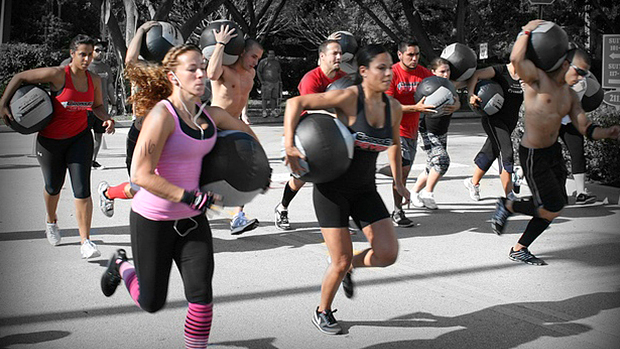Many a great back has been built by a steady diet of chin-ups and rows. There are endless variations of the chin-up, not to mention its cousin the pulldown, but you don't see a lot of gym-proven variations for the row.
Sadly, the row is where creativity goes to die. You've got dumbbell rows, barbell rows, T-bar rows, and maybe cable rows. And if it's a full moon (or if any of the previous stations are tied up) Hammer Strength rows. Crazy huh?
That's a damn shame. For a bodybuilder, the row is the single-most growth inducing back movement he or she can perform. You read that right, more than deadlifts, more than chin-ups. And the more ways you can hit the basic row, the bigger and wider your back will be.
Furthermore, rows have the unique ability of "bulletproofing" the shoulders and back. Too many sets of pull-ups can make your shoulders ache and too many heavy deadlifts can turn sitting in an office chair into a miserable experience. But well-performed rows have an opposite effect. They make you feel good -- stronger and more mobile.
Here are my top three rowing variations, designed to add a little spice to your otherwise milquetoast approach to horizontal pulling.
I thought I invented this exercise, but I've since heard there are photos of Franco Columbo doing a variation back in the Muscle Beach heyday, but for now I'll take the credit.
These are a modified version of a one-arm dumbbell row, using a T-bar instead. Here's how it's done. Stand on the floor next to the business end of the bar, where you'd normally stand if you were adding another plate.
Grab the handle with one hand and execute the row with it. Make sure you use straps -- you don't want your grip to be the limiting factor. You'll be amazed by how much weight your lats can move when your hands aren't a part of the equation.
To perfect this exercise, you need to learn how to position your hips to maximize the stretch and involvement of the entire lat, especially the lower lat.
Raise the hip closest to the bar up higher than the other hip. This helps pre-stretch the lower lat. As you row, don't twist your body. Keep your body position locked in and just drive your elbows up hard. When you do it right, you'll know.
Unlike some exercise variations that can be best described as "change for the sake of change," this one delivers big time. The fact is, this exercise is more responsible for the mass and detail I've put on my lats than any other, and is my go-to exercise for anybody that comes to me for help with a stubborn back.
Shoot for 4 sets of 10. Use 25-pound plates to get a better stretch!
This is another exercise that I've found to be brutally effective for lat development. By the way, who says barbell means "two hands"? Narrow-minded thinking will only translate to narrow lats.
To perform it, simply stand beside the loaded barbell, reach down and grasp the bar, and start rowing. If you expect this to feel like a regular dumbbell row, then be prepared to be humbled. These are unique, to say the least.
As with the Meadows rows, you really want to emphasize the stretch on the way down. Use 25-pound plates to extend the range of motion, allowing for the greatest possible stretch.
Here's the perfect exercise for training your back for serious size and explosiveness. Set the stops so that when you rest the bar it's at mid-shin. You can target virtually any area of your back by playing around with your grip and the direction in which your elbow travels.
When you row I want you to think about driving your elbows straight up and flexing your back as you contract. Don't think about pulling with your arms, just drive your elbows! The dead stop at the bottom eliminates any momentum, and the explosion out of the hole is a killer.
Now I do take credit for inventing these, so please don't ruin it for me if you know otherwise.
There are few exercises that are as beneficial to the bodybuilder as the classic row, but just because something's a classic doesn't mean you can't adjust or tweak it to suit your needs (or boredom levels).
Ditch the standard rows and insert these variations into your back routine and start rowing your way to a wider, thicker back.





